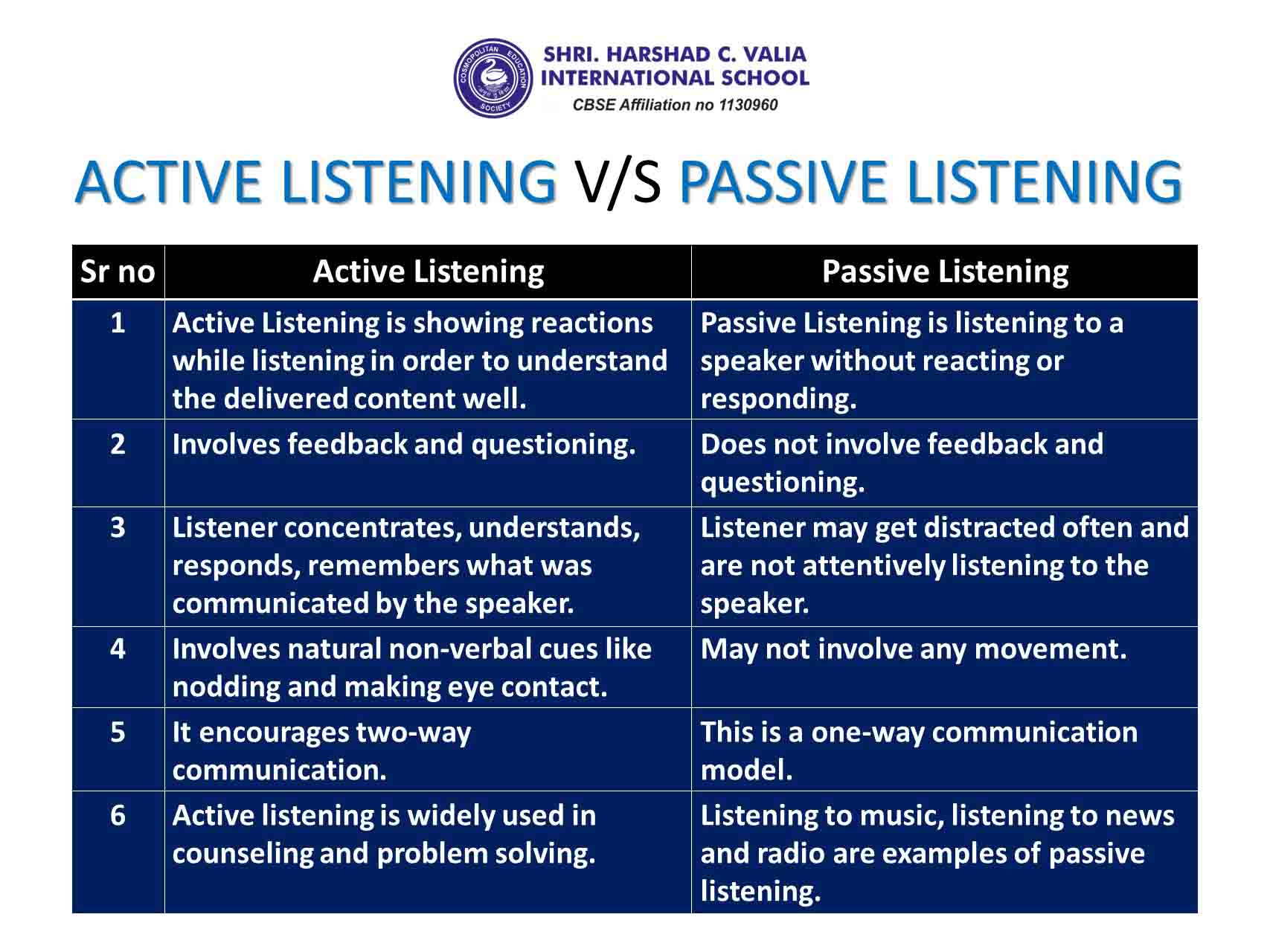
Tips to boost Listening skills in children
Listening is not only a critical but also a vital component of learning. A student’s ability to actively listen has a direct impact on building the communication skills needed both inside and outside the classroom.
Active listening is a pivotal “soft skill” that children today must develop, like problem-solving, leadership, and teamwork. It’s a skill that needs to be acquired and developed at a very nascent stage of a child’s growth – but it will take you time and patience to master this skill.
ACTIVE LISTENING:
Active listening is nothing but giving full attention to the speaker and attempting to understand the complete message communicated to you. Active listeners demonstrate verbal as well as nonverbal cues of listening.
In a nutshell, Positive reinforcement, remembering, and questioning the speaker are all verbal signs of an active listener. On the other hand, Nonverbal signs would include smiling, head nods, posture, and avoiding all distractions.
Additionally, active listening involves encouraging positive and healthy conversations. This simply means acknowledging the speaker’s point of view and possessing the ability to repeat back what was said in your own words.
WHY IS ACTIVE LISTENING IMPORTANT?
Owning active listening skills has benefits more than you can imagine. Besides better comprehension in the classroom, active listeners tend to be great orators and problem solvers. Being an active listener also makes them a good charactered person with commitment which are essential characteristics of being an exceptional leader.
The benefits of being an active listener include :
- Lesser misunderstandings
- Rapid work completion
- Valuable resourcefulness
- Self-sufficient
- Boosted productivity
There are two types of listening: Active and Passive. Below is a distinguishing table to help you understand the difference between them.

5 Tips to improve listening skills in children:
1. Maintain eye contact
People who maintain eye contact are perceived to be reliable, warm, sociable, transparent and confident. Additionally, focusing on the speaker’s eyes also helps improve the concentration of the listener. As eyes communicate in addition to words this aids you in fully understanding what the speaker is saying.
2 Don’t interrupt
It is advisable to allow the speaker to complete their content and then it’s ideal to respond. It is bad manners to interrupt before they finish their sentence. Avoid guessing or assuming instead ask if it’s the right time to ask a question.
3. Ask questions
One way to show you are actively listening (and make sure you hear correctly) is to ask specific questions about what is being said. This provides clarification, ensures deeper understanding, and shows that you are actually listening unlike in passive listening.
4. Repeat back what the speaker says
Repeat back what has been said to the speaker in your own words. This helps make sure you have understood what he or she is saying. You can start by saying, “I am just trying to confirm if I have understood correctly, you mean ……” or “correct me if I am wrong, you said ……”
Summarize by repeating the main points of the message keeping it crisp and short. This gives the speaker a chance to correct you, if necessary.
5. Listen for total meaning
Any message has two components: the content of the message and the underlying feeling or attitude. Both parts are important and give the message a holistic meaning. Keep an eye on both content and the underlying emotions for optimal understanding. At times the real message is in the emotion rather than the content.
Practising these 5 steps diligently with your children will assist them to improve their listening habits.
Last words of advice:
At Harshad Valia International School, we believe that nothing works better than being a good role model for your children be it in a classroom or at home. Parents and teachers can inculcate good listening skills by becoming active listeners themselves. Through modelling active listening to your child, they will be able to see the value and importance of being an active listener.
